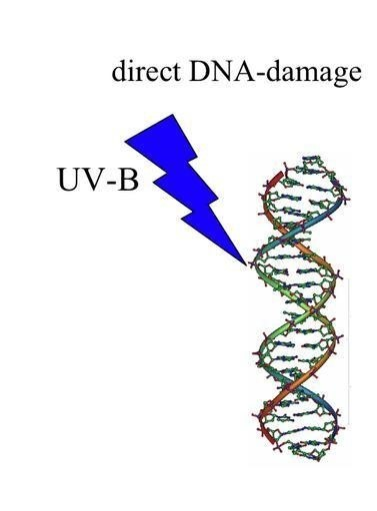Answer
394.8k+ views
Hint: The random change in the sequence of base pairs in the DNA, brought about by certain factors (it may be a genetic error during cell division or any abiotic external factor) gives rise to variations in the gene pool. This phenomenon was discovered by the famous Dutch botanist and geneticist, Hugo de Vries.
Complete answer: Mutation is essentially a change in a DNA sequence. Mutations is a chance event which arises during mistakes in DNA replication in the process of cell division. Among other external agents, exposing the DNA to ionizing radiation, or to certain chemicals known as mutagens, are the most common reasons for mutations.
It is also caused by a viral infection of a cell. Germline mutations that often occur in the gametes (eggs and sperms) are prone to inheritance, which is why they can be passed on to successive generations.
This may ultimately lead to the change in the gene pool and in turn play a role in the evolutionary process. However, this is not the case for all cells; the DNA of somatic cells, that undergo mutations are not passed on to the next generation.

So, the correct answer is option B. Chromatin fibre.
Note: It is important to note that mutations are not always harmful. Mutations can introduce better DNA sequences and therefore, mutation techniques have been extensively used by scientists in labs to develop high yielding and disease resistant crop varieties.
Complete answer: Mutation is essentially a change in a DNA sequence. Mutations is a chance event which arises during mistakes in DNA replication in the process of cell division. Among other external agents, exposing the DNA to ionizing radiation, or to certain chemicals known as mutagens, are the most common reasons for mutations.
It is also caused by a viral infection of a cell. Germline mutations that often occur in the gametes (eggs and sperms) are prone to inheritance, which is why they can be passed on to successive generations.
This may ultimately lead to the change in the gene pool and in turn play a role in the evolutionary process. However, this is not the case for all cells; the DNA of somatic cells, that undergo mutations are not passed on to the next generation.

So, the correct answer is option B. Chromatin fibre.
Note: It is important to note that mutations are not always harmful. Mutations can introduce better DNA sequences and therefore, mutation techniques have been extensively used by scientists in labs to develop high yielding and disease resistant crop varieties.
Recently Updated Pages
Basicity of sulphurous acid and sulphuric acid are

What is the stopping potential when the metal with class 12 physics JEE_Main

The momentum of a photon is 2 times 10 16gm cmsec Its class 12 physics JEE_Main

Using the following information to help you answer class 12 chemistry CBSE

Which of the following would not be a valid reason class 11 biology CBSE

Why should electric field lines never cross each other class 12 physics CBSE

Trending doubts
Difference between Prokaryotic cell and Eukaryotic class 11 biology CBSE

Difference Between Plant Cell and Animal Cell

Give 10 examples for herbs , shrubs , climbers , creepers

What organs are located on the left side of your body class 11 biology CBSE

Name 10 Living and Non living things class 9 biology CBSE

a Tabulate the differences in the characteristics of class 12 chemistry CBSE

Differentiate between homogeneous and heterogeneous class 12 chemistry CBSE

What is the type of food and mode of feeding of the class 11 biology CBSE

List some examples of Rabi and Kharif crops class 8 biology CBSE



